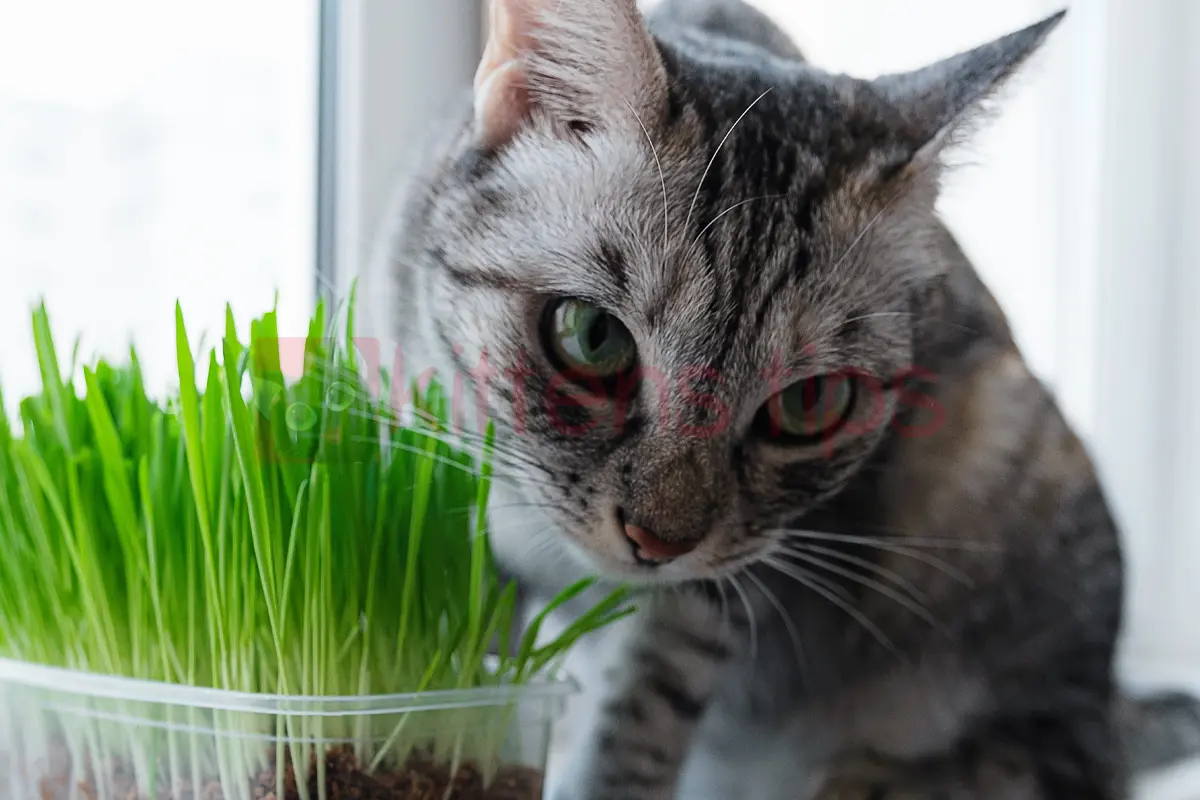In einem Vorheriger Artikel, we explored the intriguing realm of plants and their effects on our feline companions, specifically addressing the captivating question of „catnip effects on cats.“ However, among the numerous plants we discussed, there is one that stands out for its unique appeal to cats. Catnip, also referred to as „Nepeta Cataria“ or „Catmint,“ is a beloved herb among felines.
Known colloquially as „Cat’s Herb,“ Catnip originates from Europe and Asia, and its effect on cats is akin to that of a drug. Cats will sniff it, which induces a sense of well-being and relaxation. They may start to meow, roll around it, dart around the house in a frenzy, and even chew on it, although the plant’s impact is primarily olfactory (scent).
Closely related to mint, „Catnip“ has a slight lemony-mint scent, and the essential oil nepetalactone is the element that cats adore. It is believed that this substance mimics the happiness hormones of cats and stimulates nerve centers in the brain that respond to these hormones. Researchers compare „Catnip“ to the effects of marijuana in humans but without the risk of addiction or overdose.
Die meisten erwachsenen Katzen sind von Katzenminze betroffen, mit Ausnahme von Kätzchen, die jünger als acht Wochen sind. Selbst größere Katzen wie Löwen, Tiger und Leoparden sind nicht immun gegen die Auswirkungen. Die Wirkung hält typischerweise zwischen 5 und 10 Minuten an und kann etwa zwei Stunden später wiederholt werden.
Nach dem Verzehr treten bei Katzen keine negativen Auswirkungen auf. Es wurden keine Fälle von Überdosierung, Abhängigkeit, Erbrechen oder Kater gemeldet.
Allerdings reagieren nicht alle Katzen empfindlich auf dieses Kraut. Wenn Ihre Katze keine Reaktion zeigt, gehört sie zu den 20–30 % der Katzen, die gegen die Geruchssignale der Minze immun sind.
The cat toy and accessory industry has capitalized on the effects of this substance, leading to the creation of toys for cats with „Catnip.“ Owners can also use this to their advantage. You can sprinkle dried catnip on sisal or on a specially designated area for cats to sharpen their claws. This increases the likelihood that your cat will forget about the sofa, the corner of the bed, or other pieces of furniture they may otherwise use for scratching.
Katzenminze kann in einem Topf kultiviert werden und ihre Blätter können problemlos im Gefrierschrank aufbewahrt werden, sodass sie das ganze Jahr über frisch bleiben. Vermeiden Sie jedoch, die Pflanze oder ihre Blätter direktem Sonnenlicht auszusetzen, da Nepetalacton empfindlich gegenüber UV-Strahlung ist.
Der Wirkstoff dieser Pflanze hat sich im Vergleich zu anderen Produkten als wirksamer bei der Abwehr von Mücken und Küchenschädlingen erwiesen.
Katzenminze kann auch von Menschen verwendet werden. Es kann eine beruhigende Wirkung haben oder einen euphorischen Zustand hervorrufen. Die Pflanze wird zur Behandlung von Kopfschmerzen, Schlaflosigkeit, Magenbeschwerden und Husten eingesetzt oder durch Auftragen ihrer Blätter auf Schnittwunden und Wunden. Wie bei Katzen wird es für schwangere Frauen nicht empfohlen.
In conclusion, the enchanting world of catnip effects on cats reveals a captivating aspect of our feline friends‘ behavior. This remarkable herb, catnip (Nepeta Cataria), originating from Europe and Asia, has a profound impact on cats, inducing everything from fascination to relaxation. Its unique qualities, often likened to a drug, make it a must-know subject for any cat owner. Understanding how catnip effects cats can provide valuable insights into enhancing the well-being and playfulness of our beloved pets, and it remains an intriguing topic for both scientific research and the joy it brings to our feline companions.
